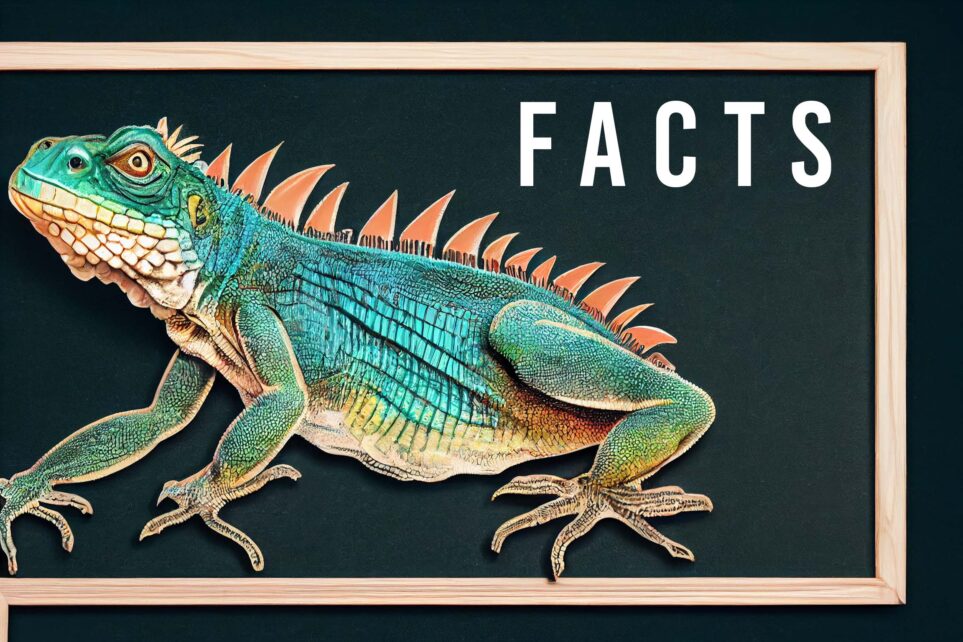Some People View Iguanas as Dangerous Pests, But Others Find Them Endearing Creatures
As a wildlife control operator, I often get calls about green iguanas. People are fascinated by these creatures and want to know more about them. Here are eight interesting facts about green iguanas:
1. Green iguanas are native to Central and South America. They are mainly found from Mexico south to Brazil, but they can also be found as far north as the Caribbean. They are now considered invasive in Puerto Rico and the U.S. Virgin Islands, where they were introduced in the 1960s.
2. The green iguana can grow as long as 6 feet in some cases. The green iguana is native to Central and South America. They have a reputation for being difficult to keep in captivity but are becoming more popular as p Iguana’s Ninos are herbivores and eat various vegetables, flowers, fruit, and leaves.
3. Green iguanas are excellent swimmers and can stay underwater for up to 30 minutes. They hold their breath by rapidly inhaling just before diving. This method is also used for short dives when the animal stays submerged only briefly.
4. Although they usually use their claws to climb, they can also use their hind legs to leap. They live in the high mountains of Ethiopia, particularly in the Simien Mountains. Their diet consists of larvae and other insects. They are agile climbers, able to leap into trees from a standing position.
5. These lizards hibernate in caves or burrows during the winter months. They are active day and night, basking in the sun most of their time. The diet” of “E. crosscut “tus” consists primarily of insects and their larvae. Still, they will also eat plant matter, especially seeds. They are agile climbers, able to leap into trees from a standing position.
6. Green iguanas cannot bite, but their tails can break off and continue moving even when unattached to their bodies. The wriggling tail may distract a predator while the iguana escapes. Green iguanas have a third eyelid (nictitating membrane). This extra lid protects the eye from injury and helps it to see underwater.
7. Green iguanas are mostly herbivorous but occasionally eat small insects or other animals. Male iguanas slowly raise their tails towards the female to attract their attention. Once the male has her attention, he will rub his chin and body on the ground to show the female that he is ready to mate. The female iguana can lay between 20 and 35 eggs in a clutch, which she will bury with sand or other debris.
8. Green iguanas shed their skin and grow a new one in just minutes. Green Iguanas can swim. Green iguanas are the only lizards that can change their skin color. This is cal “ed “chromatograph” res.” It is not only used for camouflage but also to regulate body temperature and attract mates. Green iguanas are the largest lizards native to the Americas. The green iguana is about 3-4 feet (1-1.2 m) long, including a tail that is twice as long as its body.
9. Green iguanas are often caught and kept as pets in other countries. They are not difficult to care for but can grow up to 6 feet in length, and their claws could potentially harm children if mishandled. Females will lay 10-30 eggs at a time, hatching after about four months. The babies stay with their mothers for about 6-12 months before venturing independently.
10. Some people view green iguanas as dangerous pest that destroys landscaping and eats food meant for humans and birds. However, others find them endearing “g. “They are like the rats of Flor “da,” said Frank Mazzotti, a University of Florida wildlife ecology “t. “Iguanas come in and eat what people want to eat.
Take Precautions if You Find a Green Iguana in Your Yard
If you find a green iguana in your yard, do not approach it. Watch out for the one in yneighbor’sor’s yard! Iguanas vary greatly in temperament and have even been known to attack without provocation. If you do not know how to get rid of a green iguana, then call a wildlife control operator immediately! To get rid of a green iguana, you must consiit’sit’s habits and habitat. Iguanas are arboreal (tree-dwelling) but will live in shrubs or even on the ground if necessary.
Removing Iguanas from Your Yard Will Help Your Newly Built Pool Stay Clean Longer
If you are looking to install a pool in your yard, then it is important that you remove your iguanas now. The cracks, leaks, and holes in ypool’sol’s concrete are the perfect environment for iguana feces and mosquito larvae. Iguana’s control of mosquito populations is one of the major reasons all Southeast Florida counties have now listed the green iguana as an invasive species. The concrete in your pool and patio will quickly become home to all sorts of bugs, including roaches, ants, wasps, and more. In addition to the bugs, there are also many microscopic bacteria, pathogens, and parasites that will easily grow in your pool walls.
Call a Wildlife Control Operator for Iguana Removal Service if It Is Needed
If your iguana problem has become out of control, you need a fast and efficient iguana removal service. Many companies are happy to pay for new pool construction if your existing one has too many cracks and leaks tcan’tan’t be fixed easily with just a patch job or gluing up broken sections. This can be a very effective way to get rid of iguanas from your pool. The only problem is that it takes a lot of time and effort to keep your pool clean after you have done this. However, suppose iguanas are taking up residence in your pool every summer. In that case, this may be the best long-term solution for you. The best way to get rid of iguanas is the most humane one. They have been intelligent and interesting animals on this earth for more than 50 million years. As with any other animal, they deserve to be treated with respect and kindness.

